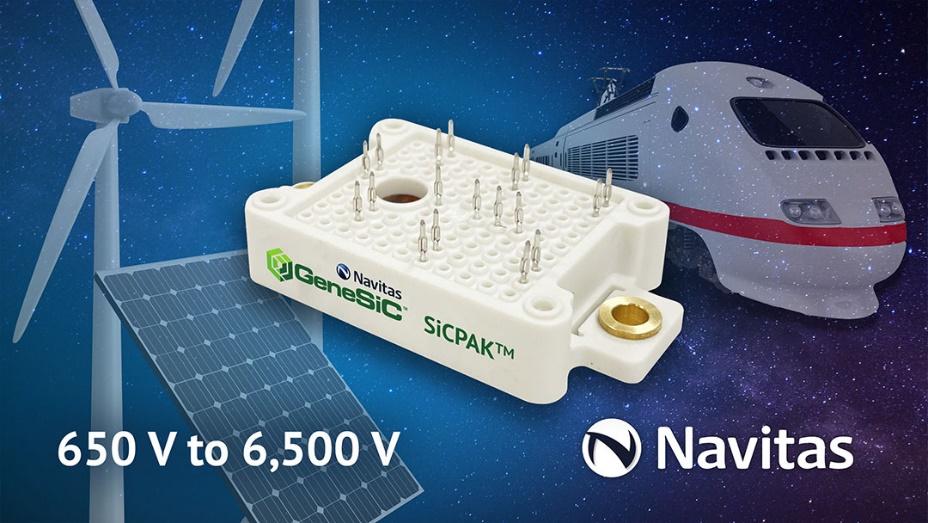Targeting high-power applications ranging from 10s kW to MW in rail, electric vehicle, industry, solar, wind and energy storage, wide bandgap (WBG) semiconductor supplier Navitas Semiconductor has announced its entry into high-power markets (Figure 1). Employing GeneSiC products and technology, the company has launched silicon carbide (SiC) based power modules called SiCPAK, as well as SiC MOSFET and MPS diodes in bare die forms. A comprehensive power-module roadmap is in the works, said the maker. High performance SiC supplier GeneSiC was acquired by the company last summer.

Offering modules ranging from 650 V to 6,500 V, the initial release will include 50 kW, 1,200 V-rated half-bridge modules in 6, 12, 20, and 30 m Ὼ ratings. The 50 kW half-bridge module, as well as 6.5 kV parts, are available now to qualified customers, said Navitas. In addition, added the manufacturer, multiple configurations of SiC MOSFETs and MPS diodes will be available to create application-specific modules for high system performance.
According to Navitas, SiCPAK modules employ ‘press-fit’ technology to offer compact form factors for power circuits and deliver cost-effective, power-dense solutions to end users. The modules are built based on GeneSiC die that have demonstrated superior performance, reliability, and ruggedness. In a statement, Navitas EVP for SiC Dr. Ranbir Singh stated, “With a complete portfolio of leading-edge power, control and isolation technology, Navitas will enable customers to accelerate the transition from fossil fuels, and legacy silicon power products to new, renewable energy sources and next-generation semiconductors, with more powerful, more efficient, faster- charging systems.”
Within the lead-free SiCPAK, each SiC chip is silver (Ag) sintered to the module’s substrate for superior cooling and reliability. The substrate itself is ‘direct-bonded copper’ (DBC) and manufactured using an active-metal brazing (AMB) technique on silicon-nitride (Si3N4) ceramics, ideal for power-cycling applications. This construction delivers excellent strength and flexibility, fracture resistance, and good thermal conductivity for cool, reliable, long-life operation.
For designers who prefer to make their own high-power modules, all GeneSiC MOSFET and MPS diodes are available in bare die format, with gold (Au) and aluminum (Al) top-side metalizations, said the manufacturer.


